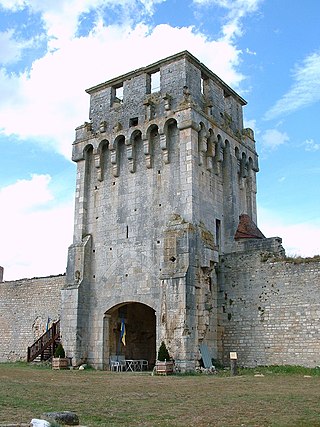
Odo of Burgundy, in French Eudes de Bourgogne, was the Count of Nevers, Auxerre and Tonnerre and son of Hugh IV, Duke of Burgundy and Yolande of Dreux.

Margaret III was a ruling Countess of Flanders, Countess of Artois, and Countess of Auvergne and Boulogne between 1384 and 1405. She was the last Countess of Flanders of the House of Dampierre.
The County of Auxerre was a county in current central France, with its capital in Auxerre. It was commonly associated with the Duchy of Burgundy.
The first counts of Rethel ruled independently, before the county passed first to the counts of Nevers, then to the counts of Flanders, and finally to the dukes of Burgundy. In 1405 the county became part of the peerage of France, and in 1581 it was elevated to a duchy. In 1663 it became the Duchy of Mazarin.

Yolande II or Yolande of Nevers, was ruling Countess of Nevers between 1262 and 1280.

The Count of Hainaut was the ruler of the county of Hainaut, a historical region in the Low Countries. In English-language historical sources, the title is often given the older spelling Hainault.

Charles II Gonzaga was the son of Charles of Gonzaga-Nevers of Rethel, Nevers, Mantua, and Montferrat; and Maria Gonzaga. He followed his grandfather Charles I, Duke of Mantua, in 1637 as ruler of these lands, the first ten years under regency of his mother Duchess Maria. On 22 March 1657, Charles II receives the appointment as Imperial Vicar in Italy. Charles sold the Duchies of Nevers and Rethel in 1659 to Cardinal Jules Mazarin, the de facto Regent of France, and they became part of France.
Adelaide of Auxerre or Adelaide of Burgundy can be used interchangeably and may refer to:
Matilda II, Countess of Nevers (1234/35–1262), also known as Maud of Dampierre or Mathilda II of Bourbon, was a sovereign Countess of Nevers, Countess of Auxerre, Countess of Tonnerre.

The County of Nevers was a county in central France. Its principal town was Nevers. It roughly corresponds to the later province of Nivernais and the modern of department of Nièvre.

Isabella Clara of Austria was a Duchess consort of Mantua, Montferrat, Nevers, Mayenne and Rethel by marriage to Charles II, Duke of Mantua and Montferrat.

The House of Dampierre played an important role during the Middle Ages. Named after Dampierre, in the Champagne region, where members first became prominent, members of the family were later Count of Flanders, Count of Nevers, Counts and Dukes of Rethel, Count of Artois and Count of Franche-Comté.

Château de Druyes is a medieval castle located in Druyes-les-Belles-Fontaines in Yonne, Bourgogne-Franche-Comté. It was built in the 12th century by the Counts of Nevers, and remained in their possession until the 18th century. It was as much a noble residence as it was a fortified castle. It was a frequented dwelling place of Peter II of Courtenay, the Emperor of Constantinople in the 13th century, and his daughter Matilda, Countess of Nevers, Auxerre and Tonnerre.
Agnes I, was the reigning Countess of Nevers, Auxerre and Tonnerre between 1185 and 1192. She was the daughter of Guy, Count of Nevers, Auxerre and Tonnerre, and Mathilde de Burgundy, dame of Montpensier.

The Duchy of Nivernais was a duchy in France, centred around the city of Nevers, of which the duchy took its name.
This page is based on this
Wikipedia article Text is available under the
CC BY-SA 4.0 license; additional terms may apply.
Images, videos and audio are available under their respective licenses.











